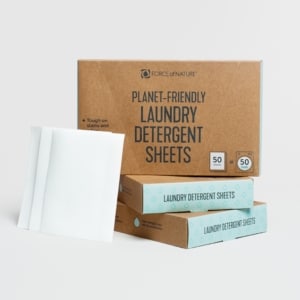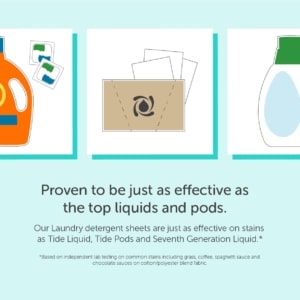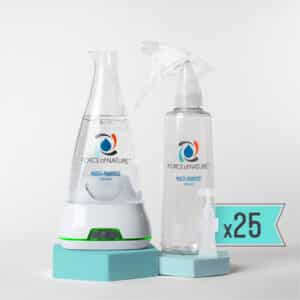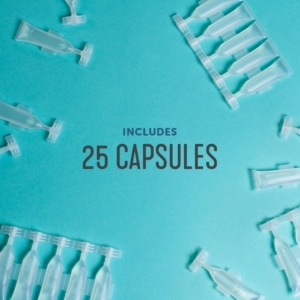
You shop for products that are eco-friendly, natural and biodegradable, so you should be covered, right? Yes and no! From tricky corporate-speak to new information and studies on how products work and break down in our environment, we are always learning. Take your eco smarts to the next level with these five eco-friendly home tips that you might not know.
5 Eco Friendly Home Tips You May Not Know
- Flushable wipes aren’t so flushable.
We can hear the collective groan from every parent in the trenches of potty training, so we get this is a major bummer. Similar to flushing a paper towel, these items are thicker and sturdier than toilet paper, and can cause clogs in our sewer systems. While most parents purchase baby wipes to use during diaper changes which they then dispose of in the diaper bin, some companies are reluctant to inform consumers that they should not be flushing them. Even wipes marketed as “flushable,” are often too hefty for a sewer system to manage. Interestingly (maybe?), even toilet paper can lead to clogs, so anything thicker and sturdier is not a great idea. The bottom (haha!) line on this eco-friendly home tip: Truly flushable wipes are, sadly, not an option at this point in time.
- We need to be leery of language on labels.
Wouldn’t it be nice if you could pick up that household product with the beautiful parchment paper packaging and green leaf on the label and trust it? Even if you go the extra step to flip it over and read the ingredients, you’re not necessarily good to go. Greenwashing is a term that refers to the way companies can mislead consumers to believe products are more eco-friendly than they are. They use imagery, colors and language to help the consumer associate the product with green practices, when in actuality they may fall short. Poorly regulated catch-all industry terms are another way that manufacturers can hide behind semantics to keep consumers in the dark about what they’re purchasing. Examples of this are the terms “fragrance,” a proprietary term that can mask hundreds of toxic chemicals, and the nebulous term “hypoallergenic” a labeling claim for which the FDA does not require substantiation. Our eco-friendly home tip: do your homework on companies before buying their brands to make sure that they’re really being as responsible as you think they are.
- Biodegradable plastics still have a hefty downside.
Plastic has gotten a bad reputation in the eco-consious world and as a result, manufacturers have explored ways to create plastics that are friendlier on the environment. Unfortunately, so far they are not living up to the hype. Plant-based plastics, called “bioplastics,” and biodegradable plastic (like PLA) may seem better at first blush as they either can be recycled or will degrade naturally in the environment or composting. The catch? We don’t really have the infrastructure in the US to help these products readily degrade. They still need processing in industrial composting facilities, which the US does not have many of. There’s also some stretching of the truth – sure a plastic bottle will biodegrade. If you have 500 years! Our eco-friendly home tip: for now, eliminating our reliance on plastic is still a better solution than any of the alternatives.
- When it comes to safe lighting, we’re still in the dark.
Incandescent bulbs use electricity to heat a filament, a process that creates light, but is extremely inefficient. Compact Fluorescent Bulbs use less energy to create light, by exciting gas fluoresces inside a tube. The downside: they contain mercury. How much and how hazardous it is is contested, but it’s enough that the EPA has outlined the steps you should take if you break one – yikes. Unfortunately, while LEDs are largely considered a safer alternative, they have some drawbacks as well, namely lead content. And all that blue light has been shown to have a negative effect on our health. Until there are safer options, this one is about doing the best you can with the information you have and doing your best not to be a butterfingers!
- You’re living with vampires.
Energy-vampires that is. Our switched-off electronic devices are siphoning energy at a rate of 15 to 30 watts a minute, costing consumers a whopping $4 billion a year. That’s billion. With a B. The offenders: devices that require standby power like televisions, air conditioners and computers, often using as much energy in their cumulative off hours as in the moments you’re using them. One category you may not have thought about: your device chargers, like those for cell phone and tablets. Now when we remind ourselves to “unplug,” we can do so literally.
These five eco-friendly tips are just the beginning! That’s why we are committed to constantly learning and improving in our own households. And, if you’ve heard the myth that there’s no safe, effective, non toxic cleaning system out there, we’re happy to debunk it. Our Force of Nature cleaning system uses household ingredients to create a powerful, family friendly cleaning product that’s safe enough for your baby’s high chair! Learn more here.



